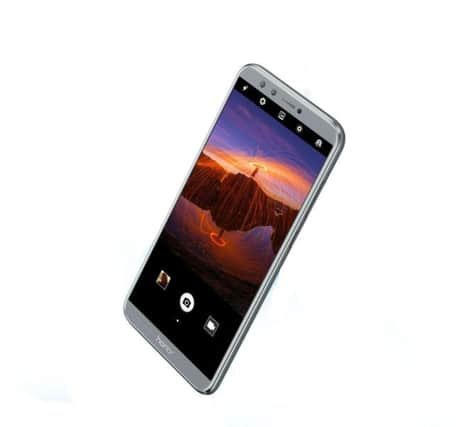Why Huawei is the big new kid on the block


In the case of mobile phones, a name can now be added to the list of the biggest players, and it’s one whose brand alone does not yet command a premium price.
The Chinese firm Huawei overtook Apple last month to become the world’s second largest maker of smartphones, calculated by market share. Only Samsung is bigger.
Advertisement
Hide AdAdvertisement
Hide AdHuawei crept up on its rivals in Europe, having steadily grown its presence since the beginning of this decade. But it had been a dominant force in the Far East for much longer, and its payroll extends to some 170,000 people.
But are its phones a match for those of Apple and Samsung? In short, yes.
Its flagship models, the P20 and P20 Pro, rival the specifications of both the iPhone X and Samsung’s Galaxy S9, with the £730, 6.1-inch Pro the first handset to feature a triple rear camera system.
Cameras with more than one lens are common now at even the lower end of the market. They shoot simultaneously at different settings and then electronically combine the results to produce pictures with different planes of sharpness. The results can be extremely pleasing: portraits with soft-focus backgrounds, for instance. If you like taking photographs, it’s certainly worth making your next phone a dual-lens model.
Advertisement
Hide AdAdvertisement
Hide AdThe addition of a third lens takes the principle a step further, but the jury is out on whether Huawei’s triple threat to its rivals is technology for technology’s sake. However, the P20 Pro’s enormous storage capacity and 6GB of memory makes it a serious contender if you’re in the market for a £24-a-month contract phone.
But it is a step or two further down the market that Huawei’s presence is really being felt. Its Honor 9 Lite handset, with a five-and-three-quarter-inch screen, dual cameras front and rear and a more-than-adequate 3GB of memory, can be bought outright for £169 – making it a better prospect than the budget market-leading Moto G5 from Motorola.
Unless your firm is paying, it makes far more sense to go for a phone at that price level than to aim for the top – the technology continues to advance at such a rate that this year’s £700 model is tomorrow’s £200 bargain.
But if you want a middle course, Huawei’s Mate range includes the six-inch Mate 10 Pro, with dual Leica lenses, for £380 or on contract. Another Mate phone is due before the end of the year, so prices of existing models will fall further.
Advertisement
Hide AdAdvertisement
Hide AdNot everyone shares Europe’s enthusiasm for the new kid on the block. On Apple’s home turf in the US, where Huawei has yet to launch, its phones have been deemed a security threat because of perceived links to the Chinese government, and our own security services published a report in July identifying “technical issues in Huawei’s engineering processes, leading to new risks in the UK telecommunications networks”.
This might be a concern for a corporation rolling out phones by the hundred to its staff, but for you or I, with a single handset on which take soft-focus portraits and to message home when we’re running late, what’s the worst that could happen?